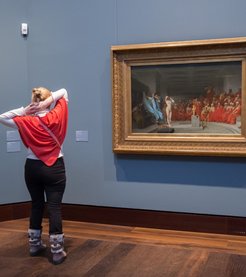Warburg’s state-tablets
Research Project

My research primarily deals with the relationship between law and images, and I approach the objects of study in terms of cultural techniques. The current project examines a key figure of modernity in the transition from the late 19th to the early 20th century: Aby Warburg. Much more than just an art historian, cultural studies and visual arts researcher, he was also a banker, a legal scholar and a polar explorer – all three of which, in his case, are closely related. This project deals with his latter three professions, focusing on this self-taught jurist.
Between 1896 and 1929, a science of law emerges in several spurts in which law is neither differentiated nor stable or stabilising. Warburg is interested in a polar and polarised law, that is, a law through which a movement passes, in which there are turns, topples, twists and spins. Warburg reconstructs the history of law not as a history of dogmatics, law books, contracts or decisions, but rather as a history of acts, formulas, protocols and all the cultural techniques that he refers to as ‘distancing' and for which he develops precise ideas about symbolisations.
Warburg's concept of Distanzschaffen (distance-proceeding) is perhaps reminiscent of Ihering’s idea of jurisprudence as the art of separating (Scheidekunst). However, Warburg’s approach is not about abstraction, isolation and progressive differentiation; instead, it is a theory of impermanent or meteorological law. Summing up his research in 1929, Warburg presented two panels from the pictorial atlas he had been working on since 1924. These panels deal with the Lateran Treaties, Mussolini's attempts to gain international credibility and the ambiguities within the treaties. The project presents the history and theory of these panels and compares them with other modern ideas about the relationship between law and image.
